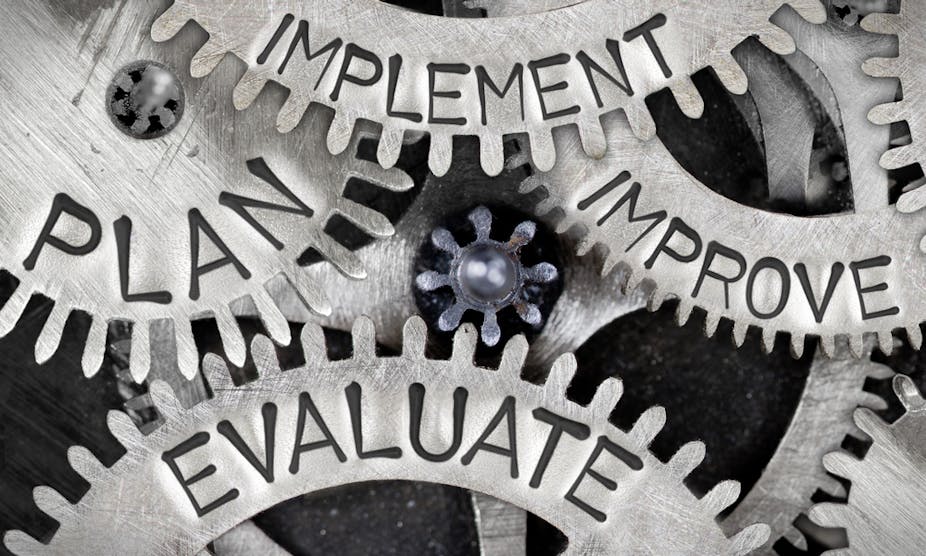Since Africa’s earliest modern public universities were established on the continent in the 1940s, these institutions have struggled to generate adequate and sustainable funding. For the most part, universities on the continent depend on money from national governments; grants; donations from international donor communities and industries to fund their learning, teaching and research activities.
But most lack proper institutional evaluation to record and track the outcomes of various grants after projects or programmes are completed. Usually, evaluations entail nothing more than a financial audit report and main outcome of the project.
This approach does little to show how a particular tranche of funding has contributed to a university achieving its mission, vision and short-to-long term plans. But universities favour it because they pride themselves on being autonomous and self-regulating.
For instance, in recent times some African universities have received grants to train PhD candidates in various fields. When the grants end, there’s only one key indicator: how many beneficiaries have graduated. This doesn’t take into account whether the project followed proper systems of accountability. It also doesn’t identify the various lessons learned from implementing the project. That means there’s no learning platform for future projects.
I set out to study how universities in Africa evaluate funding once programmes or projects are completed. I also offered some ideas about improving this evaluation, and why it is so important. I argue that evaluation is a critical tool for decisions on improving performance. It also assures that African universities are getting value for money from grants, donations and the like.
University funding
For starters, it’s useful to identify where university funding is coming from in Africa. Grants are popular. So is financial support from national governments, northern and western universities. The international donor community is involved, too, and so are philanthropic organisations.
Some examples from across the continent show just how varied and valuable grants are.
In the 2015/2016 academic year, the Office of Research and Development at the University of Ghana received US $32 million from nine international donor agencies.
In 2010, a grant profiling on the University of Ibadan in Nigeria’s website revealed that the university had 106 grants worth more than $US 17 million – and that 101 of those providing the grants were international.
The University of Nairobi in Kenya is not clear on the amount it receives from donors. But, of the 16 donors it mentions on its website, only one is Kenyan.
So how are these grants and donations assessed? In the last 15 years many of the continent’s universities have established grant offices. Their role is to strategise and attract funds from external sources. But in most cases these offices don’t have clear “grant policies” to guide their operations and the use of grants received. This lack of clear policy also means that programmes implemented under external grants can’t be properly evaluated by the universities when those grants expire.
This isn’t always a problem. International donors almost always have systems in place to evaluate the use use and impact of their grants. But industry donors and governments tend not to. So there really isn’t any way for universities to know if these grants are worthwhile, effective and add value.
The solution to this gap is an institutional grants evaluation framework that could be rolled out across the continent. Such a framework already exists elsewhere. For example, the European University Association has an institutional evaluation programme that’s conducted periodically. One of the aspects it examines is how grants are used and whether they are supporting universities’ missions, visions and outcomes.
A valuable framework
This sort of framework would have several benefits for African universities.
It would provide organisational learning and allow for future impact studies and assessments of grants. It would also improve accountability within universities and restore trust among university staff and donors. It would ensure that donor grants are properly used.
Some work is being done to address this issue. The Centre for Research Evaluation on Science and Technology (CREST) at Stellenbosch University in South Africa, through the Department of Higher Education, is helping the country’s universities to monitor government grant-related activities. Also in South Africa, universities are beginning to draw up frameworks to guide their grant programme implementation.
The broader framework I’m proposing for African universities should focus on improving policy and practice in the utilisation of all grants which flow into a particular university.
In addition, the design of the framework should define activities, inputs, performance indicators, deliverables, means of verification, outcomes and outputs and results expected from the use of the grant. Crucially, it should also speak to the broader mission and vision of the respective universities; their mid- to long-term strategic plans; the expectations from regional bodies from universities; and above all the core mission of every university: teaching, research and community engagements.
This won’t be easy. The continent’s universities lack capacity around issues of monitoring and evaluation. More people are needed who have been trained in higher education operations. Universities need to train their administrative staff in monitoring and evaluation and also employ experts in that field to work in institutions’ strategic offices.
Despite the challenges, though, universities on the continent must prioritise proper grant evaluation. Without real focus and planning, grants will not do the good they ought to and universities may lose out.

